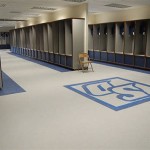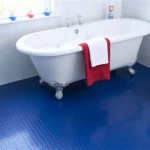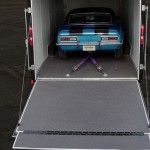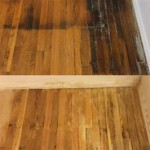Best Outside Dog Kennel Flooring For Dogs
Choosing the right flooring for an outdoor dog kennel is a crucial aspect of providing a safe, comfortable, and hygienic environment for canine companions. The floor of a dog kennel is subjected to constant wear and tear, exposure to the elements, and potential contact with bodily waste. Selecting a suitable flooring material that can withstand these challenges, while also promoting the dog’s well-being, necessitates careful consideration of various factors.
Numerous options are available, each with its own set of advantages and disadvantages. The optimal choice depends on factors such as budget, climate, the size and activity level of the dog, and the ease of maintenance. This article will explore several popular outdoor dog kennel flooring options, evaluating their characteristics to assist owners in making an informed decision.
Gravel and Crushed Stone
Gravel and crushed stone are often considered as a cost-effective and relatively easy-to-install flooring option for outdoor dog kennels. These materials provide good drainage, preventing the accumulation of standing water, which can lead to unsanitary conditions and the proliferation of bacteria and parasites. The porous nature of gravel allows urine to seep through, minimizing odors, although regular cleaning is still required to prevent the build-up of solid waste.
Different types of gravel are available, ranging in size and composition. Pea gravel, with its smooth, rounded stones, can be more comfortable for dogs to walk on compared to angular crushed stone. However, pea gravel can also be more easily kicked around and scattered, requiring more frequent replenishment. Crushed stone, on the other hand, offers better stability and is less likely to be displaced. Proper base preparation is essential for gravel and crushed stone flooring. A layer of geotextile fabric should be installed beneath the gravel to prevent it from mixing with the soil below and to improve drainage. Compacting the gravel after installation will enhance stability and prevent sinking.
One potential drawback of gravel and crushed stone is the possibility of injuries to a dog's paws, especially if the stones are sharp or angular. Regular monitoring of the stones for debris or sharp edges is advisable. Maintenance involves raking the gravel regularly to remove solid waste and occasional hosing down to flush out any accumulated urine. In colder climates, gravel can become frozen and uncomfortable for dogs to walk on. Adding a layer of insulating material, such as straw or wood shavings, can help to mitigate this problem.
Concrete
Concrete offers a durable and relatively low-maintenance flooring option for outdoor dog kennels. It provides a solid, stable surface that is easy to clean and disinfect. Unlike gravel or dirt, concrete is impermeable, preventing the absorption of urine and other fluids, thereby reducing odors and bacterial growth. However, this also means that concrete requires proper drainage to prevent standing water.
A slight slope should be incorporated into the concrete slab to allow water to run off. Drains can also be installed to facilitate drainage. Concrete can be sealed with a waterproof coating to further enhance its durability and resistance to stains and odors. Sealants also make cleaning easier. Various finishes can be applied to concrete to improve its aesthetics and texture. Stamped concrete, for example, can mimic the look of natural stone or brick, adding visual appeal to the kennel.
Despite its durability, concrete can be hard and cold, which may not be comfortable for dogs to lie on for extended periods. Providing ample bedding, such as blankets or dog beds, is essential to cushion the dog and protect it from the cold. In hot climates, concrete can become very hot, potentially causing burns to a dog's paws. Shading the kennel or providing access to cooler surfaces can help to prevent this. Furthermore, concrete can be slippery when wet, posing a risk of falls and injuries. Adding a textured finish or applying a non-slip coating can improve traction. Cracks may also develop in concrete over time, especially in areas with freeze-thaw cycles. Regular inspection and repair of cracks is necessary to prevent them from worsening and creating potential hazards.
Wood Decking
Wood decking provides a more aesthetically pleasing and comfortable flooring option compared to concrete or gravel. It offers a softer surface for dogs to walk and lie on, and it can be warmer than concrete or stone in cold weather. However, wood decking requires more maintenance and is susceptible to rotting, insect damage, and splintering.
Pressure-treated lumber is recommended for outdoor decking to resist decay and insect infestation. Regular sealing or staining is essential to protect the wood from moisture and UV damage. The decking should be installed with adequate spacing between the boards to allow for drainage and air circulation. Proper ventilation is crucial to prevent the build-up of moisture, which can promote rot. Elevating the decking off the ground can further improve ventilation and prevent contact with standing water.
Choosing a durable wood species, such as cedar or redwood, can increase the lifespan of the decking. However, these woods are typically more expensive than pressure-treated pine. Regular cleaning is necessary to remove dirt, debris, and pet waste. A mild detergent and water can be used to scrub the decking, followed by a thorough rinsing. Any splinters or loose boards should be repaired or replaced promptly to prevent injuries to the dog. Wood decking can become slippery when wet, so applying a non-slip coating or adding textured strips can improve traction. The use of pet-safe sealants and stains is crucial to avoid any potential health risks to the dog.
Rubber Flooring
Rubber flooring is gaining popularity as a safe, comfortable, and durable option for dog kennels. Rubber provides a cushioned surface that is gentle on a dog's joints, reducing the risk of injuries. It is also slip-resistant, even when wet, making it a safe choice for dogs of all ages and activity levels. Rubber flooring is available in various forms, including interlocking tiles, mats, and rolled rubber. Interlocking tiles are easy to install and can be customized to fit the size and shape of the kennel. Mats are a convenient option for smaller kennels or for providing targeted cushioning in specific areas. Rolled rubber offers a seamless surface that is easy to clean and maintain.
Rubber flooring is naturally water-resistant and easy to clean. It can be hosed down or mopped with a mild detergent and water. Unlike concrete or wood, rubber does not absorb urine or other fluids, preventing odors and bacterial growth. However, some types of rubber may have a slight odor, especially when new. This odor typically dissipates over time. High-quality rubber flooring is UV-resistant, preventing it from fading or cracking in sunlight. It is also resistant to extreme temperatures, making it suitable for outdoor use in various climates.
The cost of rubber flooring can be higher than some other options, such as gravel or concrete. However, its durability and low maintenance requirements can make it a cost-effective choice in the long run. When selecting rubber flooring, it is important to choose a product that is specifically designed for animal use. These products are typically made from non-toxic materials and are free of harmful chemicals. The thickness of the rubber flooring should also be considered. Thicker flooring provides more cushioning and is more resistant to wear and tear. Regular inspection of the rubber flooring is necessary to identify and repair any damage, such as tears or punctures. Damaged areas can be patched or replaced to maintain the integrity of the flooring.
Artificial Turf
Artificial turf offers a visually appealing and comfortable flooring option for outdoor dog kennels. It provides a soft, grassy surface that is gentle on a dog's paws and can be aesthetically pleasing for owners. High-quality artificial turf is designed to be durable and weather-resistant, making it suitable for outdoor use. It is also easy to clean and maintain, requiring minimal effort to keep it looking its best.
Artificial turf typically consists of synthetic fibers attached to a backing material. The fibers are designed to mimic the look and feel of natural grass. Proper drainage is essential for artificial turf to prevent the accumulation of standing water. A layer of gravel or crushed stone should be installed beneath the turf to facilitate drainage. The turf should also be sloped slightly to allow water to run off. Pet-specific artificial turf features antimicrobial properties that inhibit the growth of bacteria and odors. These turfs are usually constructed from polyethylene or polypropylene fibers that are resistant to fading and wear. Regular cleaning is crucial to remove pet waste and prevent odors. Solid waste should be removed promptly, and the turf should be rinsed with water regularly. A mild detergent can be used to remove stubborn stains or odors. Some pet owners use enzymatic cleaners to break down urine and feces effectively.
While artificial turf can be a comfortable and visually appealing option, it can also become hot in direct sunlight. Providing shade for the kennel is important to prevent the turf from becoming too hot for the dog's paws. The cost of artificial turf can be higher than some other flooring options, but depending on the required maintenance of other options, the cost can be equalized over time. Selecting a high-quality, pet-specific product is crucial to ensure its durability and safety. Cheaper artificial turfs may not be as durable or resistant to pet waste, leading to premature wear and tear. Regular inspection of the turf is necessary to identify and repair any damage, such as tears or loose fibers. Damaged areas can be patched or replaced to maintain the integrity of the turf. In warmer climates, consider installing an irrigation system to cool the turf during hot weather. This will help to keep the dog comfortable and prevent the turf from overheating.

What Flooring Options Work Best For 10x10 Dog Kennels

Screened In Porch Flooring That Holds Up To Pets

The Best Flooring Features For Outdoor Dog Kennels

Dog Kennel Flooring Kenneled Dogs Floors

K9 Kennel Leading Dog Systems

How To Build Dog Kennel Floors Using Ecogrid

Screened In Porch Flooring That Holds Up To Pets

Best Flooring For Outside Dog Kennel

The Best Rock Flooring To Use For Dog Kennels

Best Outdoor Dog Kennel Flooring Photos The Free Stock Hd S
Related Posts








